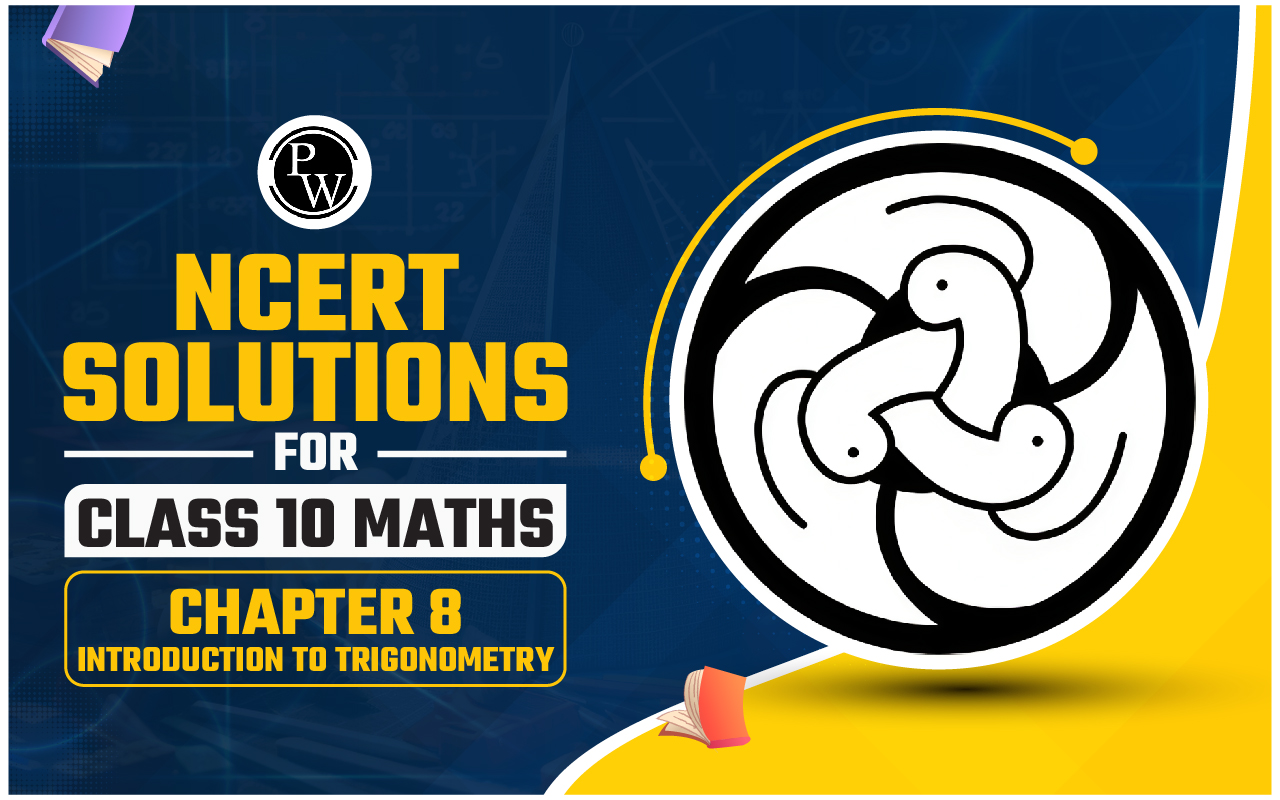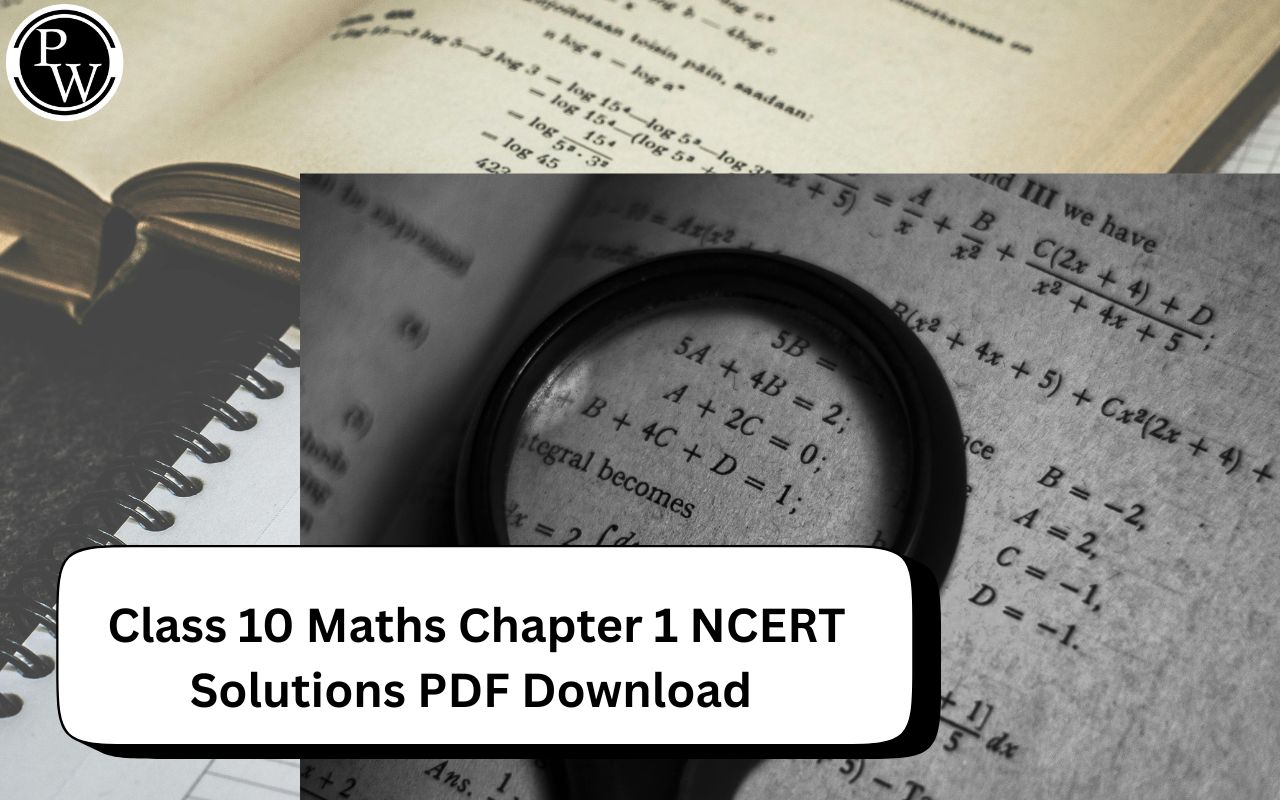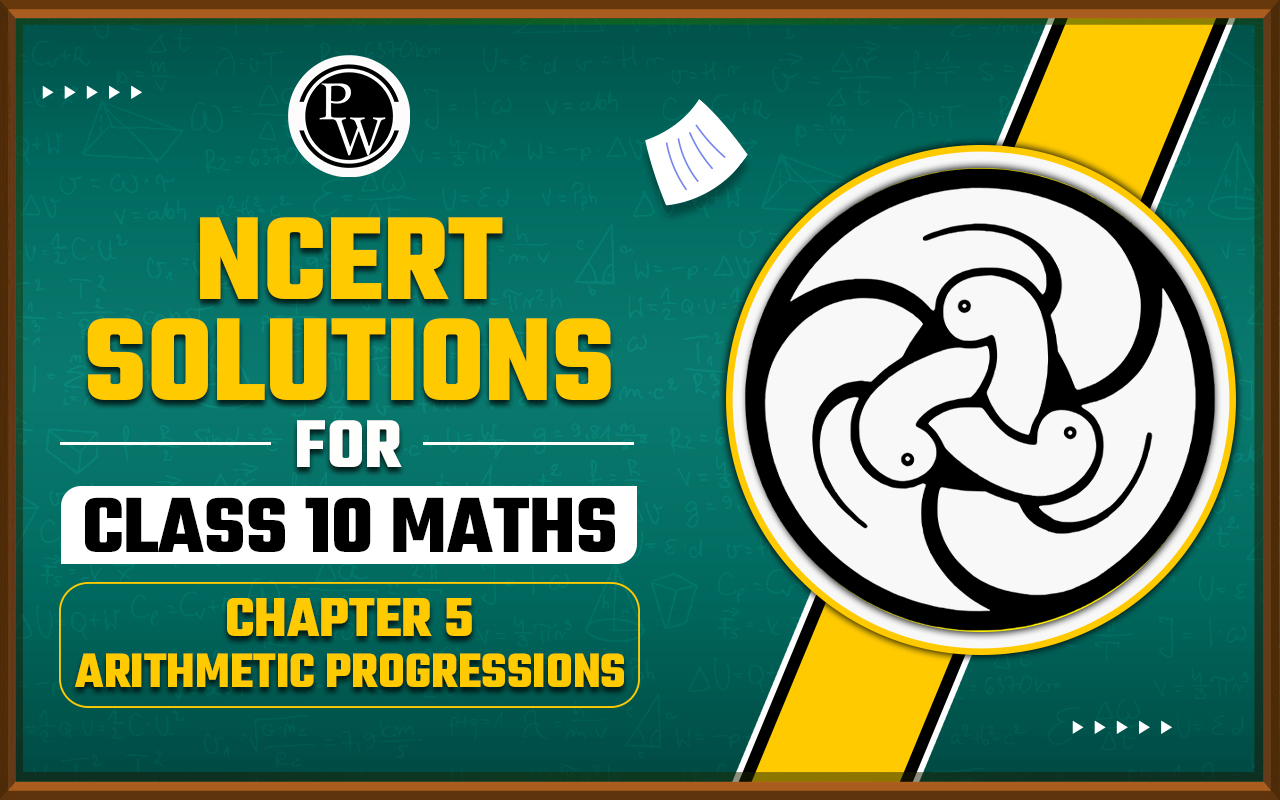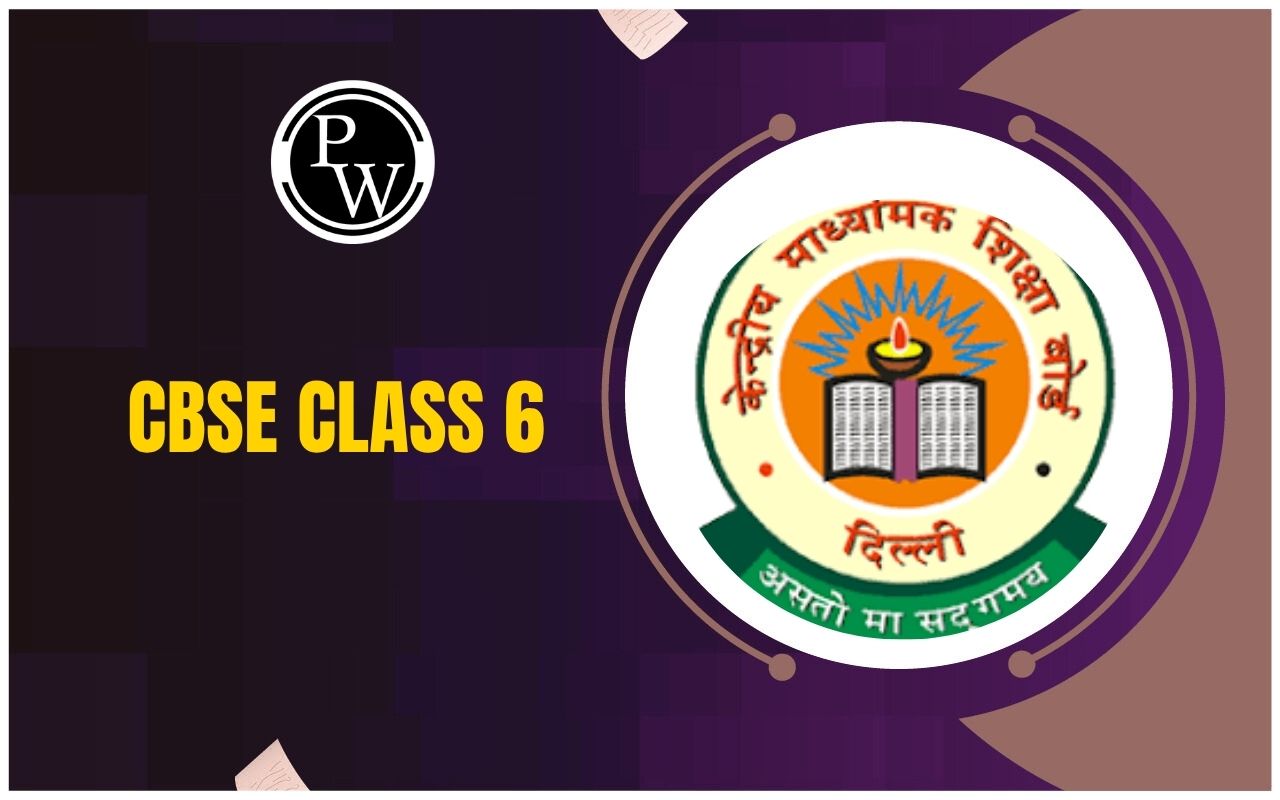
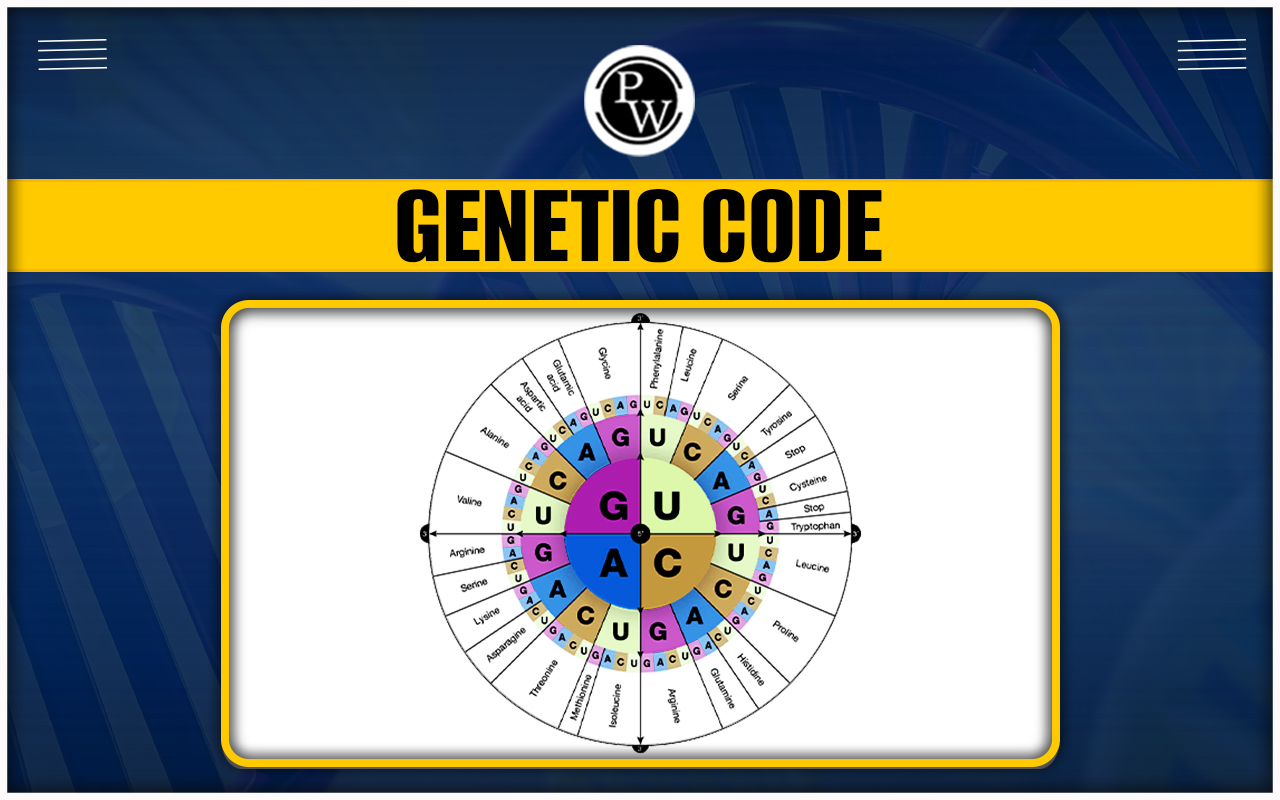
Genetic Code: Have you ever sent one of your siblings a secret letter? If so, you might have used a code to conceal the message from your parents. For instance, you put together the alphabet differently by adhering to specific guidelines.
Your sibling on the other end would need to be aware of the code and use the same guidelines in reverse to decipher what you had written. Likewise, a cellular language is written as genetic codes in the DNA in the cell's nucleus. This article will help you understand how this cellular language works.Introduction
The process of synthesizing a protein from DNA information with the help of RNA is comparable to translating a language. A cellular language is converted during protein synthesis into 20 amino acids. RNA nucleotides are used to "rewrite" the DNA sequence of a gene. The nucleotide sequence in the mRNA is then "translated" into an amino acid sequence in a protein. A genetic code is a cellular language that decodes the information and specifies the order of amino acids that make up proteins. Codons, which are groupings of three nucleotides, are read by cells to decode DNA first and then mRNA. Genes contain the instructions for a living thing's various traits. Thus, genetic information is transmitted as code from generation to generation.Genetic Code Codons Amino Acids
Structure of DNA and RNA
DNA and RNA stands for deoxyribonucleic acid and ribonucleic acid. DNA is a very long double helical molecule constructed from various combinations of four different nucleotide subunits, adenine (A), cytosine (C), guanine (G), and thymine (T). Each nucleotide comprises a nitrogenous base, five-carbon deoxyribose sugar, and a phosphate group. The sugar-phosphate portion of nucleotides also forms the backbone of double-stranded DNA and RNA. In contrast, RNA is a very long single-stranded molecule constructed from various combinations of four different nucleotide subunits, adenine (A), cytosine (C), guanine (G), and uracil (U). Each nucleotide comprises a nitrogenous base, five-carbon ribose sugar, and a phosphate group. The nitrogenous bases in DNA are complementary to each other—for example, adenine pairs with thymine, and cytosine pairs with guanine. The complementary strand of mRNA in DNA is called the sense strand. It is decoded by mRNA. mRNA stands for messenger ribonucleic acid—the adenine of DNA pairs with the uracil of mRNA. The bases of DNA and mRNA make up the codons, and the cellular language that decodes is known as genetic code.How was Genetic Code Discovered?
Each nucleotide in a DNA or RNA molecule may be mapped to a single amino acid in a polypeptide in one of the most basic codes. Since proteins typically include 20 amino acids and DNA or RNA only has four nucleotide bases, this code cannot function. As a result, scientists knew that the code could not simply be a one-to-one correspondence between nucleotides and amino acids. A physicist, George Gamow, postulated in the middle of the 1950s that a gene might code for one amino acid in a polypeptide by a series of three sequential nucleotides. Gamow's triplet theory was generally accepted because it made sense. With work from the American scientist Marshall Nirenberg, the genetic code was first cracked in 1961. Nirenberg and his coworkers recognized individual nucleotide triplets that matched particular amino acids for the first time.Genetic Code
The genetic code is the entire set of rules or cellular language encoded between codons and amino acids within DNA, the genetic material. Codons and nucleotide sequences are read consecutively in three groups to decode DNA and mRNA.Codons
A codon is a grouping of three nucleotides in a DNA or RNA molecule that functions as a unit of genetic code. The codons code for specific amino acids, while some unique codons do not code for any amino acid. The standard DNA and RNA codon tables are given below.Standard DNA Codon Table
| Amino-acid biochemical properties | Nonpolar | Polar | Basic | Acidic ↓ | Termination: stop codon * | Initiation: possible start codon |
| 1st base | 2nd base | 3rd base | |||||||
| T | C | A | G | ||||||
| T | TTT | (Phe/F) Phenylalanine | TCT | (Ser/S) Serine | TAT | (Tyr/Y) Tyrosine | TGT | (Cys/C) Cysteine | T |
| TTC | TCC | TAC | TGC | C | |||||
| TTA | (Leu/L) Leucine | TCA | TAA | Stop ( Ochre ) * | TGA | Stop ( Opal ) * | A | ||
| TTG | TCG | TAG | Stop ( Amber ) * | TGG | (Trp/W) Tryptophan | G | |||
| C | CTT | CCT | (Pro/P) Proline | CAT | (His/H) Histidine | CGT | (Arg/R) Arginine | T | |
| CTC | CCC | CAC | CGC | C | |||||
| CTA | CCA | CAA | (Gln/Q) Glutamine | CGA | A | ||||
| CTG | CCG | CAG | CGG | G | |||||
| A | ATT | (Ile/I) Isoleucine | ACT | (Thr/T) Threonine | AAT | (Asn/N) Asparagine | AGT | (Ser/S) Serine | T |
| ATC | ACC | AAC | AGC | C | |||||
| ATA | ACA | AAA | (Lys/K) Lysine | AGA | (Arg/R) Arginine | A | |||
| ATG | (Met/M) Methionine | ACG | AAG | AGG | G | ||||
| G | GTT | (Val/V) Valine | GCT | (Ala/A) Alanine | GAT | (Asp/D) Aspartic acid ↓ | GGT | (Gly/G) Glycine | T |
| GTC | GCC | GAC | GGC | C | |||||
| GTA | GCA | GAA | (Glu/E) Glutamic acid ↓ | GGA | A | ||||
| GTG | GCG | GAG | GGG | G | |||||
Standard RNA Codon Table
| Amino-acid biochemical properties | Nonpolar | Polar | Basic | Acidic ↓ | Termination: stop codon * | Initiation: possible start codon |
| 1st base | 2nd base | 3rd base | |||||||
| U | C | A | G | ||||||
| U | UUU | (Phe/F) Phenylalanine | UCU | (Ser/S) Serine | UAU | (Tyr/Y) Tyrosine | UGU | (Cys/C) Cysteine | U |
| UUC | UCC | UAC | UGC | C | |||||
| UUA | (Leu/L) Leucine | UCA | UAA | Stop ( Ochre ) * | UGA | Stop ( Opal ) * | A | ||
| UUG | UCG | UAG | Stop ( Amber ) * | UGG | (Trp/W) Tryptophan | G | |||
| C | CUU | CCU | (Pro/P) Proline | CAU | (His/H) Histidine | CGU | (Arg/R) Arginine | U | |
| CUC | CCC | CAC | CGC | C | |||||
| CUA | CCA | CAA | (Gln/Q) Glutamine | CGA | A | ||||
| CUG | CCG | CAG | CGG | G | |||||
| A | AUU | (Ile/I) Isoleucine | ACU | (Thr/T) Threonine | AAU | (Asn/N) Asparagine | AGU | (Ser/S) Serine | U |
| AUC | ACC | AAC | AGC | C | |||||
| AUA | ACA | AAA | (Lys/K) Lysine | AGA | (Arg/R) Arginine | A | |||
| AUG | (Met/M) Methionine | ACG | AAG | AGG | G | ||||
Types of Codons
There are three types of codons, and they are- Start codon: The start codon sequence is AUG, which plays a specific role by acting as the codon at which translation starts. In most species, it encodes for the amino acid methionine (Met).
- Normal codon: In the genetic code, most codons encode amino acids, known as normal codons. For example, UUU, UCU, and UAU codes for phenylalanine.
- Stop codon: The are three stop codons in the genetic code, UAA, UAG, and UGA. The stop codons stop the translation of proteins.
Difference Between DNA and RNA
Properties of Genetic Code
The properties of genetic code are listed below- Triplet Code: A codon is described as a set of nucleotides that specify an amino acid. Substantial evidence indicates that a sequence of three nucleotides (triplet) codes for an amino acid in the protein.
- Non-ambiguous and Universal: The genetic code is unambiguous. Each codon will only ever code for one single amino acid. It has also been determined that all species share the same genetic code, making them universal.
- Degenerate Code: Every amino acid, except tryptophan (UGG) and methionine (AUG), is encoded by a different codon; this characteristic is called the degeneracy of the genetic code. For instance, in yeast mitochondria, UGA codes for tryptophan.
- Nonoverlapping Code: A nucleotide that is a part of one triplet never becomes a part of the following triplet when the code is read in groups of three sequentially.
- Punctuation: There is no space for punctuation, indicating that each codon immediately follows the one before it without any nucleotides in between.
- Start and Stop Codons: The AUG codon is the initiating or start codon. In Eukaryotes, it codes for methionine, and in prokaryotes may be the first component of the polypeptide chain is N- formylmethionine.
- Polarity: The message is read in a 5’ → 3’ direction by the genetic code. Reading in the opposite direction will code for a different amino acid. It means that the polarity of the codons is fixed.
Genetic Code <span style=
Q1. Name the four nitrogenous bases present in DNA.
Answer: The four nitrogenous bases present in DNA are adenine (A), cytosine (C), guanine (G), and thymine (T).
Q2. Name the four nitrogenous bases present in RNA.
Answer: The four nitrogenous bases present in RNA are adenine (A), cytosine (C), guanine (G), and uracil (U).
Q3. What is the sequence for the start codon, and which amino acid it encodes?
Answer: The sequence for the start codon is AUG, and it encodes for Methionine (Met) amino acid in most organisms.
Q4. How many stop codons are there in the genetic code? Write down their sequence as well.
Answer: The are three stop codons in the genetic code, UAA, UAG, and UGA.
Q5. What do you mean by normal codon?
Answer: In the genetic code, most codons encode amino acids, known as normal codons. For example, UUU, UCU, and UAU codes for phenylalanine.
🔥 Trending Blogs
Talk to a counsellorHave doubts? Our support team will be happy to assist you!

Free Learning Resources
PW Books
Notes (Class 10-12)
PW Study Materials
Notes (Class 6-9)
Ncert Solutions
Govt Exams
Class 6th to 12th Online Courses
Govt Job Exams Courses
UPSC Coaching
Defence Exam Coaching
Gate Exam Coaching
Other Exams
Know about Physics Wallah
Physics Wallah is an Indian edtech platform that provides accessible & comprehensive learning experiences to students from Class 6th to postgraduate level. We also provide extensive NCERT solutions, sample paper, NEET, JEE Mains, BITSAT previous year papers & more such resources to students. Physics Wallah also caters to over 3.5 million registered students and over 78 lakh+ Youtube subscribers with 4.8 rating on its app.
We Stand Out because
We provide students with intensive courses with India’s qualified & experienced faculties & mentors. PW strives to make the learning experience comprehensive and accessible for students of all sections of society. We believe in empowering every single student who couldn't dream of a good career in engineering and medical field earlier.
Our Key Focus Areas
Physics Wallah's main focus is to make the learning experience as economical as possible for all students. With our affordable courses like Lakshya, Udaan and Arjuna and many others, we have been able to provide a platform for lakhs of aspirants. From providing Chemistry, Maths, Physics formula to giving e-books of eminent authors like RD Sharma, RS Aggarwal and Lakhmir Singh, PW focuses on every single student's need for preparation.
What Makes Us Different
Physics Wallah strives to develop a comprehensive pedagogical structure for students, where they get a state-of-the-art learning experience with study material and resources. Apart from catering students preparing for JEE Mains and NEET, PW also provides study material for each state board like Uttar Pradesh, Bihar, and others
Copyright © 2025 Physicswallah Limited All rights reserved.
Get App



